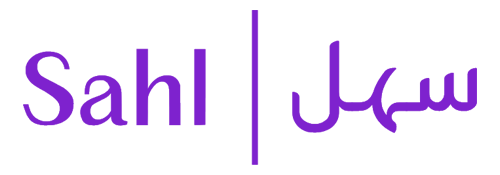Discover how AI compliance tools are revolutionising business operations by automating regulatory tasks, reducing risk, and boosting efficiency. Explore the future today
The Rise of AI Compliance Tools in Modern Business
AI compliance solutions are becoming vital resources for companies looking for efficiency, security, and peace of mind in a world that is becoming more and more governed. Businesses must deal with rising requirements for clear and efficient regulation, whether they are managing PDPL in Saudi Arabia, or ISO certifications worldwide.
In addition to taking a lot of time, manual compliance procedures are also susceptible to mistakes and inconsistencies. AI compliance tools are revolutionizing this area by improving making decisions, optimizing processes, and lowering human risk.
What Are AI Compliance Tools?
Understanding the Basics
Software programs that employ machine learning as well as artificial intelligence to assist organizations in conforming to within the organization, legal, and regulations are referred to as AI compliance tools. Actions like these can be handled with these methods:
- Data classification
- Policy creation
- Risk assessments
- Vendor audits
- Privacy request handling
By leveraging AI, these tools go beyond simple automation. They continuously learn from inputs and outputs, allowing them to improve over time and adapt to changing regulatory landscapes.
The Need for Automation in Compliance
Traditionally, compliance management was handled through spreadsheets, documents, and manual reviews. However, as regulations become more intricate and geographically diverse, this approach is no longer viable. AI bridges the gap by providing real time insights and predictive analytics, allowing compliance teams to be proactive rather than reactive.
Key Benefits of Using AI Compliance Tools
Increased Efficiency and Time Savings
AI dramatically reduces the time spent on repetitive compliance tasks. For instance, instead of manually reviewing vendor security reports, an AI system can scan, evaluate, and highlight risks within seconds. This automation not only increases operational efficiency but also allows teams to focus on strategic priorities.
Improved Accuracy and Reduced Risk
Manual errors in compliance can lead to costly violations. AI compliance tools minimise these errors by maintaining a consistent, rules based approach that eliminates subjective interpretation and human fatigue.
Real Time Monitoring and Alerts
immediate tracking of countless points of information among algorithms is possible with AI systems. This enables the early detection of anomalies or compliance hazards before they become significant issues. Displays and alerts give you continuous insight into your hazard status.
Adaptability to New Regulations
As new laws emerge (like Saudi Arabia’s PDPL or updates to the GDPR), AI compliance tools can be updated with the latest rules. Some platforms even provide automatic updates and risk scoring aligned with regional legislation, reducing the burden on legal and IT teams.
Use Cases Across Industries
Healthcare
Hospitals and clinics use AI driven tools to maintain HIPAA compliance, manage patient data securely, and handle privacy requests automatically. Sensitive information is flagged and encrypted without human intervention.
Finance and Banking
Banks rely on AI compliance systems to ensure AML (Anti Money Laundering) standards are met. Transactional data is monitored in real time, and suspicious activity is flagged instantly.
Technology Companies
Tech startups and SaaS businesses increasingly adopt AI compliance tools to meet ISO 27001 or SOC 2 requirements without needing full time compliance teams. These tools help them scale operations securely and win customer trust.
Features to Look for in AI Compliance Tools
When evaluating platforms, it’s important to consider the following:
- Automated Risk Assessment: Evaluate and prioritise compliance risks across your business.
- Custom Policy Generation: Instantly generate compliant policies aligned with regional regulations.
- Audit Trails: Maintain tamper proof logs for internal and external audits.
- Data Subject Request Management: Handle GDPR, PDPL, and CCPA data access and deletion requests efficiently.
- Vendor Risk Management: Assess third party risk based on documentation and ongoing activity.
- Regulatory Change Updates: Stay current with automated compliance framework updates.
How AI Compliance Tools Improve Business Decision Making
AI doesn’t just help with “checking boxes.” It gives compliance officers and executives insights into why and where risks are emerging. Predictive analytics offer early warning signs, helping companies pivot and avoid violations.
These tools also support cross functional collaboration, legal, IT, and operations teams can all access shared dashboards, creating a single source of truth.
Challenges and Considerations Before Implementation
While the advantages are significant, implementing AI compliance tools requires careful planning.
Integration with Existing Systems
Ensure the platform integrates smoothly with your current stack (e.g., CRM, HRIS, cloud storage).
Data Privacy
Choose tools that respect data sovereignty and encryption standards, especially when handling sensitive customer or employee information.
Human Oversight
AI should support, not replace, human expertise. Continuous oversight and governance are essential for trustworthy compliance outcomes.
Regional Relevance: AI Compliance Tools in the GCC
Countries like Saudi Arabia and the UAE have introduced their own data protection laws. Compliance tools with built in support for KSA PDPL or UAE PDPL frameworks can help regional businesses stay ahead of local regulators.
Some platforms offer region specific features like:
- Arabic language support
- Localised policy templates
- Hosting options within the GCC
- Continuous updates on PDPL regulatory guidance
This localisation enhances trust and legal alignment, especially in sensitive sectors like banking, health, and government tech.
How to Choose the Right Platform
Here’s a quick checklist:
- Supports multiple frameworks (ISO, SOC 2, PDPL, GDPR)
- Includes policy automation and audit trail features
- Real time monitoring and alerts
- Role based access and user control0
- Localisation for your country and industry
- Strong customer support and onboarding services
The right platform not only addresses your current compliance needs but scales as you grow, adding modules for new regions, frameworks, or audit types.
The Future of Compliance Is AI Powered
Compliance is no longer a one time event, it’s an ongoing process. As digital transformation accelerates, manual processes won’t be able to keep up. Businesses that adopt AI compliance tools will be more agile, more secure, and better equipped to earn trust from regulators, partners, and customers alike.
Conclusion
The world of business compliance is no longer bound by binders and manual checklists. In a rapidly digitising ecosystem, AI compliance tools are emerging as the cornerstone of effective governance, regulatory alignment, and risk mitigation. These tools don’t just tick boxes they transform how organisations think about data privacy, vendor management, and legal accountability.
Businesses can stay ahead of constantly evolving rules like GDP and the Saudi PDPL, manage enforcement of laws, and obtain instant insight into their regulatory position by implementing Cognitive compliant technologies. More significantly, they present themselves as progressive businesses that respect efficiency, trust, and openness.
It’s also about futureproofing. With regulations tightening globally and consumer expectations rising around data protection, relying solely on manual processes is not just inefficien, it’s risky. AI helps eliminate human error, identifies vulnerabilities before they escalate, and empowers compliance teams to act with confidence.
For startups aiming to build trust quickly, or enterprises managing multi-regional frameworks, AI compliance tools offer scalability, reliability, and speed. They turn compliance from a headache into a strategic advantage making it easier to enter new markets, build partner confidence, and stay audit-ready at all times.
In short, embracing AI compliance tools is not just a tech upgrade, it’s a business imperative. If your organisation wants to lead in a compliance-driven future, there’s no better time to start than now.
Frequently Asked Questions (FAQs)
Q) What industries benefit most from AI compliance tools?
Finance, healthcare, SaaS, manufacturing, and government are top adopters, but any industry subject to regulations can benefit.
Q) Are AI compliance tools expensive to implement?
Costs vary by provider and feature set, but most tools save money over time by reducing fines, human effort, and risk.
Q) Can AI compliance tools fully replace compliance officers?
No. These tools are meant to augment human expertise, not replace it. They help teams work faster and more accurately.
Q) Is data privacy a concern with these tools?
Yes, ensure your vendor meets encryption, access control, and data localisation standards, especially under frameworks like GDPR and PDPL.
Q) Are there AI tools tailored for Saudi Arabian regulations?
Yes. Some platforms like Sahl offer specific features for KSA PDPL compliance, including automated scans, policy builders, and localised templates.
Q) How do AI compliance tools handle cross-border data regulations?
AI compliance tools often come equipped with rule sets for different countries and regions, allowing businesses to manage multiple data privacy laws like GDPR, PDPL, and CCPA simultaneously. They help classify data based on geographic origin and apply the relevant compliance rules automatically.
Q) What kind of businesses should consider AI compliance tools first?
Businesses handling sensitive data, such as healthcare providers, financial institutions, SaaS companies, and e-commerce platforms, should prioritize adopting AI compliance tools due to their higher regulatory exposure and risk levels.
Q) How quickly can a business implement an AI compliance tool?
Implementation time depends on the tool and organization size but typically ranges from a few days to a few weeks. Most platforms offer quick-start templates, automated onboarding, and integrations to accelerate deployment.



